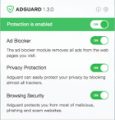What is Fire Search?
The experienced security researchers have determined that Fire Search is classified as a potentially unwanted application (PUA) from the group of Browser hijackers. The aim of a browser hijacker is to generate advertising revenue. For example, a browser hijacker redirects the user’s homepage to the browser hijacker’s page that contains ads or sponsored links; a browser hijacker redirects the user web searches to a link the browser hijacker wants the user to see, rather than to legitimate search engine results. When the user clicks on advertisements in the search results, developers of browser hijackers gets paid. The developers of browser hijackers can collect privacy data such as user browsing habits as well as browsing history and sell this information to third parties for marketing purposes.
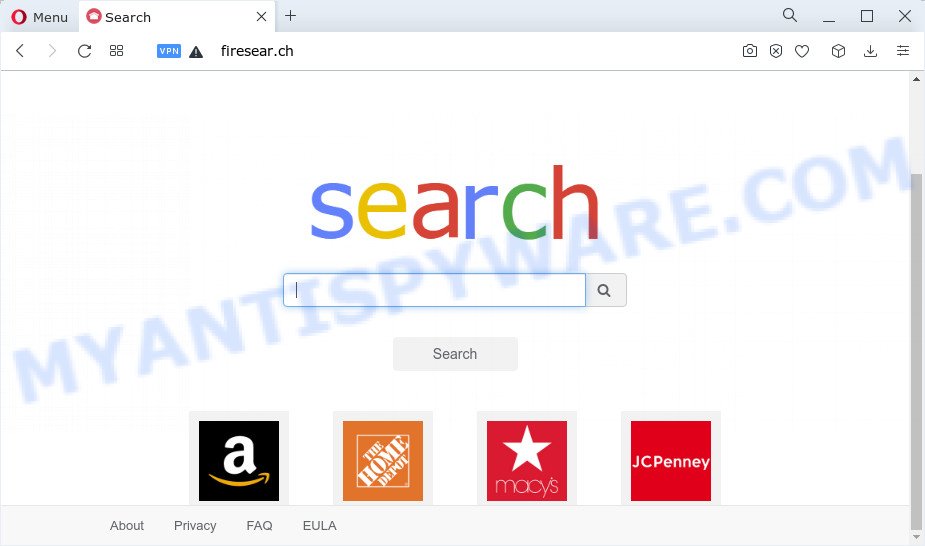
Most often, browser hijackers promote fake search providers by setting their address as the default search provider. In this case, the Fire Search browser hijacker installs firesear.ch as a search engine. This means that users whose browser is affected with the browser hijacker are forced to visit firesear.ch each time they search in the Net, open a new window or tab. And since firesear.ch is not a real search engine and does not have the ability to find the information users need, this web site redirects the user’s internet browser to the webcrawler.com website.

The security specialists do not recommend having PUPs like Fire Search on the MAC, as it is not known exactly what it does. In addition to the above, it has the ability to collect a wide variety of your confidential info which can be later sold to third party companies. You don’t know if your home address, account names and passwords are safe. And of course you completely do not know what will happen when you click on any advertisements on the Fire Search webpage.
Thus, browser hijackers and potentially unwanted programs are quite dangerous. So, we recommend you delete it from your machine sooner. Follow the steps presented below to get rid of Fire Search from Chrome, Mozilla Firefox and Safari.
How can a browser hijacker get on your MAC OS
In most cases, PUPs and browser hijackers is bundled with the setup packages from file sharing web sites. So, install a free software is a a good chance that you will find a bundled browser hijacker. If you don’t know how to avoid it, then use a simple trick. During the setup, choose the Custom or Advanced setup mode. Next, click ‘Decline’ button and clear all checkboxes on offers that ask you to install optional software. Moreover, please carefully read Term of use and User agreement before installing any software or otherwise you can end up with another unwanted program on your MAC like this browser hijacker.
Threat Summary
| Name | Fire Search |
| Type | search provider hijacker, PUP, browser hijacker, start page hijacker, redirect virus |
| Asscoiated domains | firesear.ch |
| Affected Browser Settings | start page, new tab page URL, search engine |
| Distribution | misleading popup ads, fake software updaters, free applications installation packages |
| Symptoms | Pop-ups and new tabs are loaded without your request. You keep getting redirected to unfamiliar web-pages. Your machine starts automatically installing unexpected programs. Unwanted internet browser toolbar(s) Your machine settings are being altered without your request. |
| Removal | Fire Search removal guide |
How to remove Fire Search from Mac
The following steps will allow you to get rid of Fire Search hijacker from the Safari, Mozilla Firefox and Google Chrome. Moreover, the tutorial below will allow you to remove malware like PUPs, adware and toolbars that your MAC OS may be infected. Please do the instructions step by step. If you need assist or have any questions, then ask for our assistance or type a comment below. Some of the steps below will require you to shut down this web-page. So, please read the step-by-step guidance carefully, after that bookmark it or open it on your smartphone for later reference.
To remove Fire Search, use the steps below:
- Remove profiles created by Fire Search
- Delete Fire Search associated software by using the Finder
- Remove Fire Search related files and folders
- Scan your Mac with MalwareBytes
- Remove Fire Search from Safari, Chrome, Firefox
- How to stop Fire Search redirects
- To sum up
Remove profiles created by Fire Search
Fire Search can make changes to Mac system such as malicious changes to browser settings, and the addition of malicious system profiles. You need to check the system preferences, find and remove malicious profiles and ensure your settings are as you expect.
Click the System Preferences icon ( ![]() ) in the Dock, or choose Apple menu (
) in the Dock, or choose Apple menu ( ![]() ) > System Preferences.
) > System Preferences.
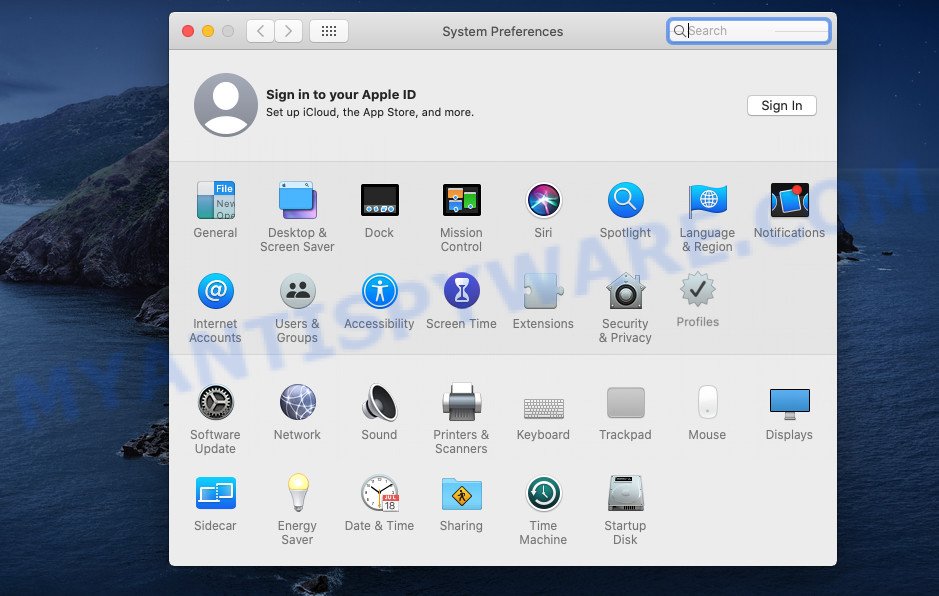
In System Preferences, click Profiles, then select a profile associated with Fire Search.
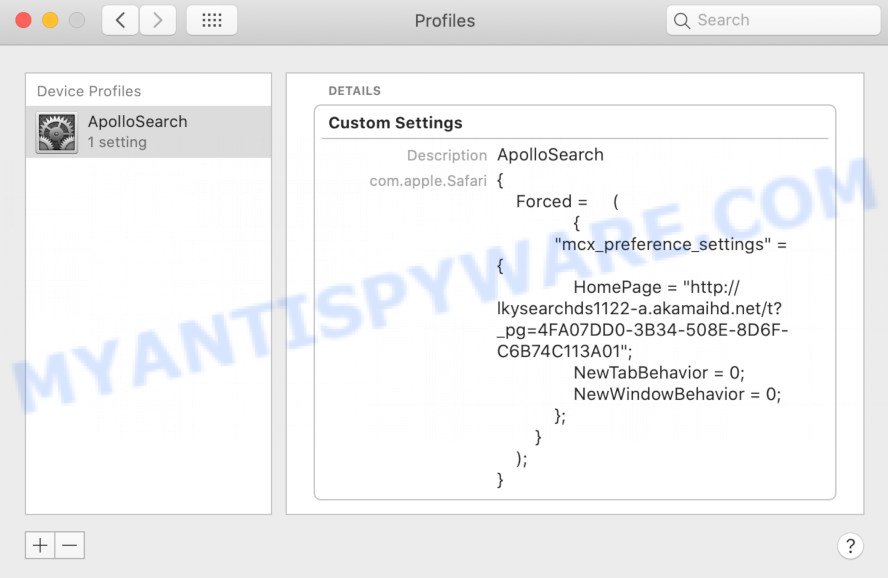
Click the minus button ( – ) located at the bottom-left of the Profiles screen to remove the profile.
Note: if you do not see Profiles in the System Preferences, that means there are no profiles installed on your Mac, which is normal.
Delete Fire Search associated software by using the Finder
Check the list of installed programs and uninstall all unknown or questionable apps. This is an important step, it so often happens that PUPs, browser hijackers and adware are built into free software, so by removing these applications you can get rid of undesired ads and web-browser redirects.
Open Finder and click “Applications” like below.
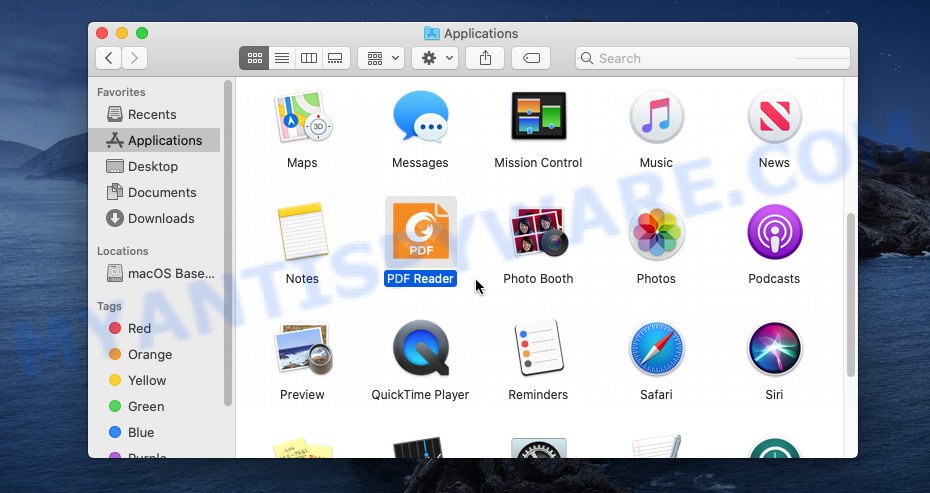
You will see a list of programs installed on your machine. We recommend to pay maximum attention to the program you installed last. Most likely, it is the Fire Search hijacker. If you’re in doubt, you can always check the program by doing a search for her name in Google, Yahoo or Bing.
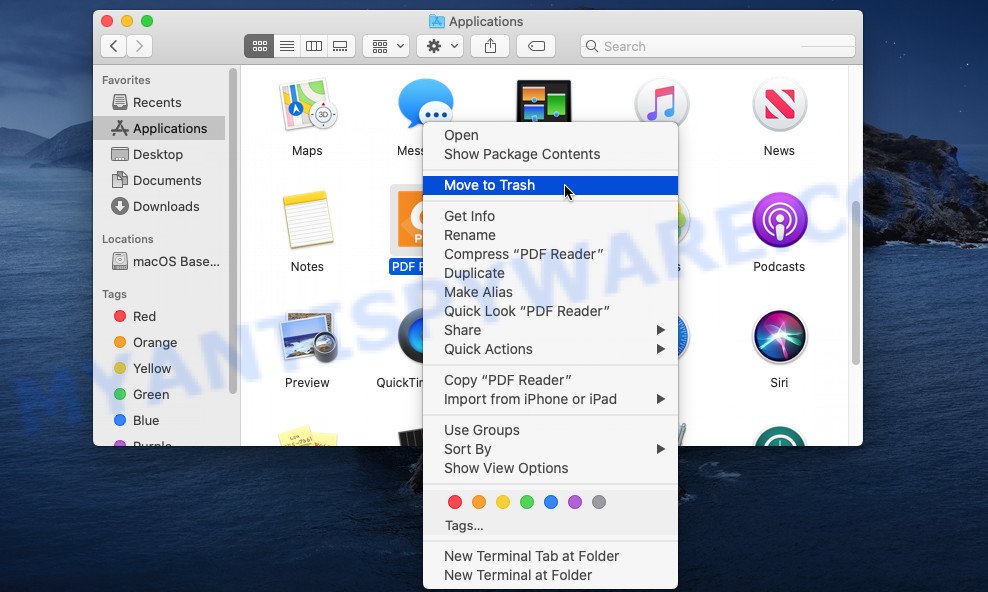
After the program which you need to uninstall is found, simply right click on its name, and choose “Move to Trash”.
Don’t forget, choose Finder, then “Empty Trash”.
Remove Fire Search related files and folders
Now you need to try to find Fire Search related files and folders, and then delete them manually. You need to look for these files in certain directories. To quickly open them, we recommend using the “Go to Folder…” command.
Click on the Finder icon. From the menu bar, select Go and click “Go to Folder…”. As a result, a small window opens that allows you to quickly open a specific directory.

Check for Fire Search generated files in the /Library/LaunchAgents folder

In the “Go to Folder…” window, type the following text and press Go:
/Library/LaunchAgents
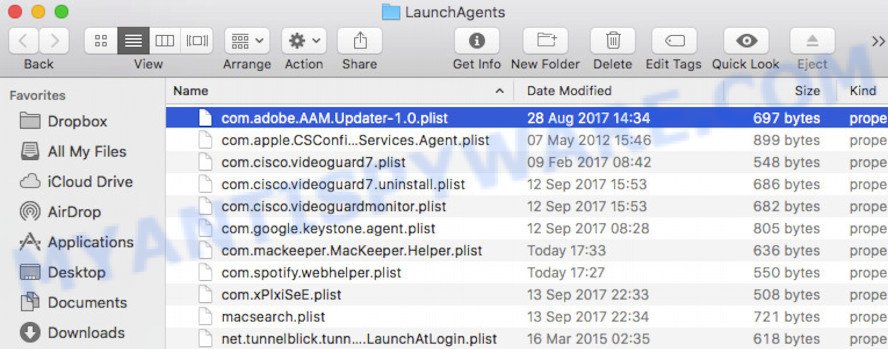
This will open the contents of the “/Library/LaunchAgents” folder. Look carefully at it and pay special attention to recently created files, as well as files that have a suspicious name. Move all suspicious files to the Trash. A few examples of files: installapp.plist, search.plist, macsearch.plist, FireSearch.plist and com.machelper.plist. Most often, adware, browser hijackers and potentially unwanted programs create several files with similar names.
Check for Fire Search generated files in the /Library/Application Support folder

In the “Go to Folder…” window, type the following text and press Go:
/Library/Application Support
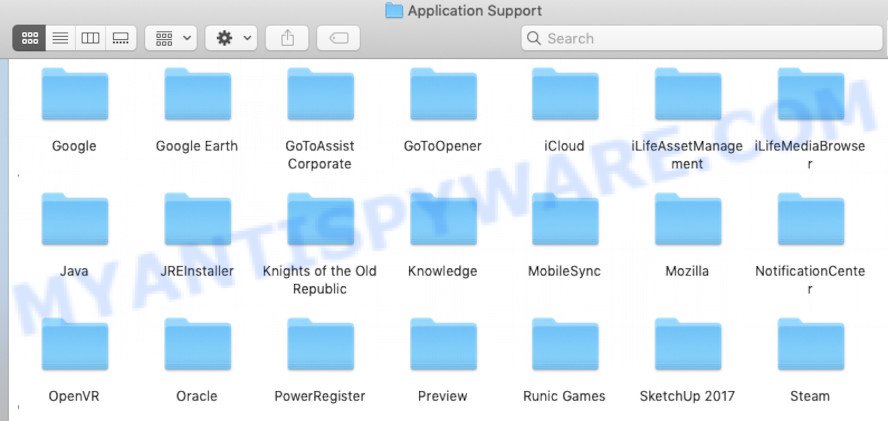
This will open the contents of the “Application Support” folder. Look carefully at its contents, pay special attention to recently added/changed folder. Move all suspicious folders to the Trash.
Check for Fire Search generated files in the “~/Library/LaunchAgents” folder

In the “Go to Folder…” window, type the following text and press Go:
~/Library/LaunchAgents

Proceed in the same way as with the “/Library/LaunchAgents” and “/Library/Application Support” folders. Look for suspicious and recently added files. Move all suspicious files to the Trash.
Check for Fire Search generated files in the /Library/LaunchDaemons folder
In the “Go to Folder…” window, type the following text and press Go:
/Library/LaunchDaemons

Carefully browse the entire list of files and pay special attention to recently created files, as well as files that have a suspicious name. Move all suspicious files to the Trash. A few examples of files to be deleted: com.machelper.plist, com.FireSearch.plist, com.installapp.plist, com.macsearch.plist and com.search.plist. In most cases, adware, potentially unwanted programs and browser hijackers create several files with similar names.
Scan your Mac with MalwareBytes
If you’re still having issues with the Fire Search removal or just wish to check your Mac occasionally for hijacker and other malware, then download MalwareBytes Anti-Malware (MBAM). It is free for home use, and detects and deletes various unwanted programs that attacks your Apple Mac or degrades MAC system performance. MalwareBytes Anti Malware can remove toolbars, browser hijackers, adware software and potentially unwanted programs as well as malicious software, including ransomware and trojans.
Download MalwareBytes Anti Malware from the following link.
21024 downloads
Author: Malwarebytes
Category: Security tools
Update: September 10, 2020
After downloading is done, close all apps and windows on your machine. Run the saved file. Follow the prompts.
The MalwareBytes will automatically start and you can see its main screen as on the image below.
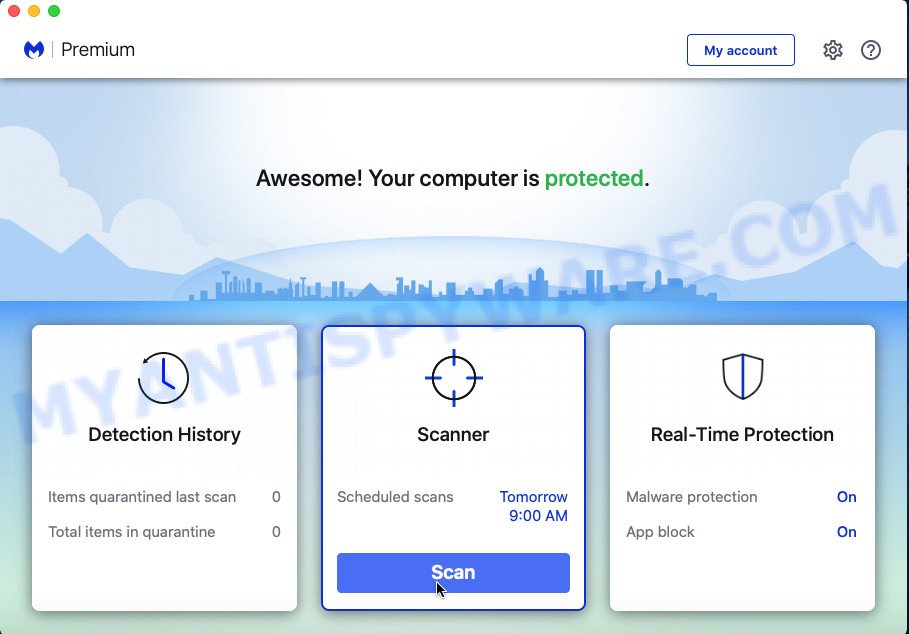
Now click the “Scan” button to perform a system scan with this tool for the Fire Search hijacker. While the MalwareBytes Free application is checking, you can see number of objects it has identified as threat.

Once MalwareBytes Anti Malware (MBAM) completes the scan, MalwareBytes Anti-Malware (MBAM) will prepare a list of unwanted programs and hijacker. You may delete threats (move to Quarantine) by simply click the “Quarantine” button. The MalwareBytes will remove Fire Search hijacker and move the selected threats to the program’s quarantine.
Remove Fire Search from Safari, Chrome, Firefox
If you are still getting Fire Search browser hijacker, then you can try to delete it by removing malicious add-ons.
You can also try to remove Fire Search hijacker by reset Google Chrome settings. |
If you are still experiencing problems with Fire Search browser hijacker removal, you need to reset Mozilla Firefox browser. |
|
How to stop Fire Search redirects
Run ad-blocking program like AdGuard in order to stop ads, malvertisements, pop-ups and online trackers, avoid having to install harmful and adware browser plug-ins and add-ons which affect your MAC system performance and impact your computer security. Browse the Internet anonymously and stay safe online!
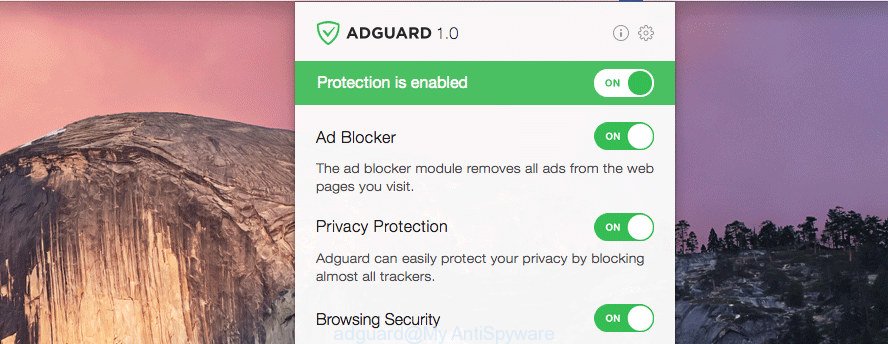
AdGuard can be downloaded from the following link.
3782 downloads
Author: © Adguard
Category: Security tools
Update: January 17, 2018
Once the download is done, start the downloaded file. You will see the “Setup Wizard” screen. Follow the prompts.
Each time, when you run your machine, AdGuard will run automatically and stop unwanted pop-up ads, block Fire Search redirects, as well as other harmful or misleading web pages.
To sum up
Now your Apple Mac should be free of the Fire Search browser hijacker. We suggest that you keep AdGuard (to help you stop unwanted advertisements and unwanted malicious webpages) and MalwareBytes (to periodically scan your computer for new malware, hijackers and adware). Make sure that you have all the Critical Updates recommended for Mac OS. Without regular updates you WILL NOT be protected when new browser hijackers, malicious software and adware are released.
If you are still having problems while trying to remove Fire Search redirects from your web browser, then ask for help here.

